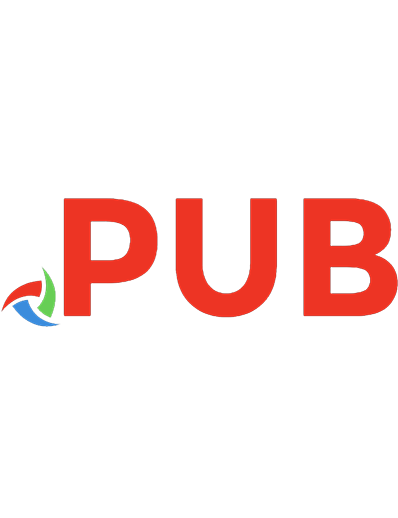Emotional Labor in Work with Patients and Clients: Effects and Recommendations for Recovery 0367900955, 9780367900953
This book describes psychosocial working conditions that negatively impact the mental and physical well-being of employe
397 93 6MB
English Pages 128 [129] Year 2020
Table of contents :
Cover
Half Title
Series Page
Title Page
Copyright Page
Table of Contents
Acknowledgment
Series Editor
Editor
Contributors
Chapter 1 Emotional Labor at Work with Patients and Customers: The Effects and Recommendations for Recovery
Chapter 2 Stress-Inducing Customer Behaviors and Wellbeing in Tax Administration Workers: What Is the Role of Emotional Labor?
2.1 Introduction
2.1.1 Stress-Inducing Customer Behaviors and Worker Wellbeing
2.1.2 Emotional Labor
2.1.2.1 Surface Acting
2.1.2.2 Deep Acting
2.1.3 The Effects of Emotional Labor
2.1.4 Present Study
2.1.4.1 Hypotheses
2.2 Method
2.2.1 Participants and Procedure
2.2.2 Measures
2.2.3 Statistical Analysis
2.3 Results
2.3.1 The Mediating Role of Emotional Labor in the Relationship between Stress-Inducing Customer Behaviors and Job Burnout of Workers
2.3.1.1 Disproportionate Customer Expectations and Employee Disengagement from Work
2.3.1.2 Disproportionate Customer Expectations and Worker Exhaustion
2.3.1.3 Hostile Customer Behaviors and Employee Disengagement from Work
2.3.1.4 Hostile Customer Behaviors and Worker Exhaustion
2.3.2 The Mediating Role of Emotional Labor in the Relationship between Stress-Inducing Customer Behaviors and the Physical Wellbeing of Workers
2.3.2.1 Disproportionate Customer Expectations and the Physical Wellbeing of Workers
2.3.2.2 Hostile Customer Behaviors and the Physical Wellbeing of Workers
2.4 Summary and Discussion of Results
2.4.1 Strengths and Limitations
2.5 Conclusions
References
Chapter 3 The Relationship between Intensification of Stress-Inducing Customer Behaviors, Job Burnout, and Well-Being of Customer Service Workers: The Role of Emotional Labor Types
3.1 Introduction
3.2 Customer Service Work and Stress Research
3.3 Job Burnout
3.4 Emotional Labor
3.5 The Cultural Effects of Emotional Labor
3.6 Individual Factors and Effects of Emotional Labor
3.7 Organizational Factors and Effects of Emotional Labor
3.8 Study Groups
3.9 Method
3.9.1 The Psychosocial Working Conditions Questionnaire
3.9.2 The Stress-Inducing Customer Behavior Scale
3.9.3 The Oldenburg Burnout Inventory
3.9.4 Deep Acting and Surface Acting Scale (DASAS)
3.10 Descriptive Statistics
3.11 Results
3.11.1 Private Insurance Workers
3.11.1.1 The Moderating Role of Deep Acting in the Relationship between the Intensity of Abusive Customer Behavior and the Physical Well-Being of Employees
3.11.1.2 The Moderating Role of Deep Acting in the Relationship between the Intensity of Hostile Customer Behaviors and the Mental Well-Being of Workers
3.11.1.3 Summary
3.11.2 Social Insurance Workers
3.11.2.1 The Moderating Role of Deep Acting in the Relationship between the Intensity of Hostile Customer Behaviors and the Physical Well-Being of Workers
3.11.2.2 The Moderating Role of Deep Acting in the Relationship between the Intensity of Hostile Customer Behaviors and the Mental Well-Being of Workers
3.11.2.3 The Moderating Role of Deep Acting in the Relationship between Disproportionate Customer Expectations and the Physical Well-Being of Workers
3.11.2.4 The Moderating Role of Deep Acting in the Relationship between the Intensity of Disproportionate Customer Expectations and the Mental Well-Being of Workers
3.11.2.5 The Moderating Role of Deep Acting in the Relationship between the Intensity of Disproportionate Customer Expectations and the Exhaustion of Employees
3.11.2.6 The Moderating Role of Faking Emotions in the Relationship between the Intensity of Disproportionate Customer Expectations and the Exhaustion of Employees
3.11.2.7 Summary
3.12 The Study Variables and Sickness Absence Correlation Analysis
3.13 Conclusions
References
Chapter 4 Health Impairment Process in Human Service Work: The Role of Emotional Demands and Personal Resources
4.1 Introduction
4.2 Emotional Demands in Human Service Work
4.3 Direct Effect of Job Demands on Depression
4.4 Mediation Effect of Job Burnout in Job Demands – Depression Link
4.5 Moderation Effect of Personal Resources
4.6 Method
4.6.1 Participants and Procedure
4.6.1.1 Measure
4.6.1.2 Analytical Procedure
4.6.1.3 Results
4.7 Discussion
References
Chapter 5 Determinants and Consequences of Work-Related Stress in Personnel of Residential Care Establishments
5.1 Introduction
5.2 The Work of Residential Care Establishment Personnel
5.3 Work-Related Stress among Workers Caring for Patients of Residential Care Homes
5.4 Study Group
5.5 Method
5.6 Study Results
5.6.1 Health Status
5.6.2 Lifestyle
5.6.3 Mental Health Status
5.6.4 Psychosocial Working Conditions
5.7 Summary of the Residential Care Home Employee Group Survey Results
5.7.1 Job Demands
5.7.2 Work Organization and Content
5.7.3 Health and Well-Being
5.8 Work-Related Stress Management Support Program for the Personnel of Residential Care Establishments
5.9 Employee-Addressed Measures
5.9.1 Stress Management Programs
5.9.2 Promoting Healthy Lifestyles
5.10 Organization-Oriented Activities
5.10.1 Measures to Reduce Organizational Limitations at Work
5.10.2 Measures to Reduce the Level of Job Demands
5.10.3 Actions to Prevent Stress-Inducing Patient/Client Behavior
5.10.4 Actions to Reduce Interpersonal Conflicts at Work
5.10.5 Actions to Strengthen Job Control and Social Support
References
Chapter 6 Psychosocial Stressors at Work and Stress Prevention Methods among Medical Staff of Psychiatric and Addiction Treatment Wards
6.1 Introduction
6.2 Medical staff in psychiatric health care
6.3 Psychosocial Stressors at Work for Medical Staff of Psychiatric Wards – Present Research
6.3.1 Aim of the Study
6.3.2 Method
6.3.2.1 Measure
6.3.2.2 Participants
6.4 Results
6.4.1 Emotional demands
6.4.2 Offensive Behaviors – Threats of Violence
6.4.3 Lifestyle – Alcohol Consumption and Physical Activity
6.5 Discussion of Results
6.6 Work-Related Stress-Coping Support Methods
6.7 Emotional Burden-Related Stress Prevention Methods
6.7.1 Mindfulness-Based Stress Reduction Training
6.7.2 Strengthening Mental Resilience
6.7.3 Emotional Intelligence Development Training
6.8 Aggressive Patient Behavior-Related Stress-Prevention Methods
6.8.1 Educational Training
6.8.2 Working Environment Settings
6.9 Health and Well-Being
6.9.1 Workplace Health Promotion
6.9.2 Prevention of Alcohol Abuse
6.10 Summary and Conclusions
References
Index

![Emotional labour in work with patients and clients: effects and recommendations for recovery [First edition]
2020007827, 9780367900953, 9780367513719, 9781003032496, 0367900955, 9781000092158, 1000092151, 9781000092165, 100009216X, 9781000092172, 1000092178, 1003032494](https://dokumen.pub/img/200x200/emotional-labour-in-work-with-patients-and-clients-effects-and-recommendations-for-recovery-first-edition-2020007827-9780367900953-9780367513719-9781003032496-0367900955-9781000092158-1000092151-9781000092165-100009216x-9781000092172-1000092178-1003032494.jpg)



![Therapists Who Have Sex with Their Patients: Treatment and Recovery [1 ed.]
0876307241, 9780876307243](https://dokumen.pub/img/200x200/therapists-who-have-sex-with-their-patients-treatment-and-recovery-1nbsped-0876307241-9780876307243.jpg)




